
South Korea, officially the Republic of Korea (ROK), is a country in East Asia. It constitutes the southern part of the Korean Peninsula and borders North Korea along the Korean Demilitarized Zone; though it also claims the land border with China and Russia. The country's western border is formed by the Yellow Sea, while its eastern border is defined by the Sea of Japan. South Korea claims to be the sole legitimate government of the entire peninsula and adjacent islands. It has a population of 51.96 million, of which roughly half live in the Seoul Capital Area, the ninth most populous metropolitan area in the world. Other major cities include Incheon, Busan, and Daegu.

The Mount Rushmore National Memorial is a national memorial centered on a colossal sculpture carved into the granite face of Mount Rushmore in the Black Hills near Keystone, South Dakota, United States. Sculptor Gutzon Borglum designed the sculpture, called Shrine of Democracy, and oversaw the project's execution from 1927 to 1941 with the help of his son, Lincoln Borglum. The sculpture features the 60-foot-tall (18 m) heads of four United States presidents: George Washington, Thomas Jefferson, Theodore Roosevelt, and Abraham Lincoln, chosen to represent the nation's birth, growth, development and preservation, respectively. Mount Rushmore attracts more than two million visitors annually to the memorial park which covers 1,278 acres. The mountain's elevation is 5,725 feet (1,745 m) above sea level.

Nagasaki Prefecture is a prefecture of Japan located on the island of Kyūshū. Nagasaki Prefecture has a population of 1,314,078 and has a geographic area of 4,130 km2. Nagasaki Prefecture borders Saga Prefecture to the northeast.

A mausoleum is an external free-standing building constructed as a monument enclosing the burial chamber of a deceased person or people. A mausoleum without the person's remains is called a cenotaph. A mausoleum may be considered a type of tomb, or the tomb may be considered to be within the mausoleum.
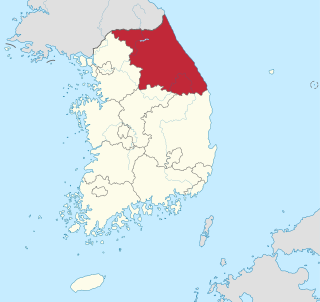
Gangwon State is a Special Self-Governing Province of South Korea and the least densely populated subdivision of the country. Gangwon is one of the three provinces with special self-governing status, the others being Jeju Province and Jeonbuk State. On the east bound by the East Sea, it borders Gyeonggi Province to its west, North Gyeongsang Province and North Chungcheong Province to its south, and the Military Demarcation Line to the north, separating it from North Korea's Kangwŏn Province. Before the division of Korea in 1945 Gangwon and Kangwŏn Provinces formed a single province.

South Chungcheong Province, also known as Chungnam, is a province of South Korea in the Hoseo region in the southwest of the Korean Peninsula. South Chungcheong borders the provinces of Gyeonggi to the north, North Chungcheong, Sejong Special Self-governing City, and Daejeon Metropolitan City to the east, and North Jeolla to the south.
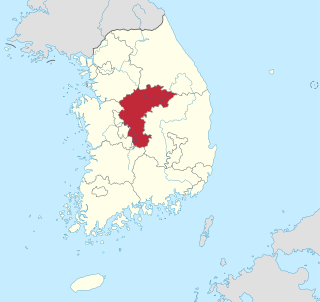
North Chungcheong Province, also known as Chungbuk, is a province of South Korea. North Chungcheong has a population of 1,578,934 (2014) and has a geographic area of 7,433 km2 (2,870 sq mi) located in the Hoseo region in the south-center of the Korean Peninsula. North Chungcheong borders the provinces of Gyeonggi and Gangwon to the north, North Gyeongsang to the east, North Jeolla to the south and South Chungcheong, Sejong Special Autonomous City and Daejeon Metropolitan City to the west.

Seoraksan (Korean: 설악산), or Mt. Sorak, is the highest mountain in the Taebaek mountain range in the Gangwon Province in eastern South Korea. It is located in the Seoraksan National Park, near the city of Sokcho. After the Hallasan volcano on Jeju Island and Jirisan in the south, Seoraksan is the third highest mountain in South Korea. The Daechongbong Peak (대청봉) of Seoraksan reaches 1,708 meters. The mountain is sometimes considered the backbone of South Korea.

The Fletcher class was a class of destroyers built by the United States during World War II. The class was designed in 1939, as a result of dissatisfaction with the earlier destroyer leader types of the Porter and Somers classes. Some went on to serve during the Korean War and into the Vietnam War.

Mount Kumgang or the Kumgang Mountains is a mountain massif, with a 1,638-metre-high (5,374 ft) peak, in Kangwon-do, North Korea. It is located on the east coast of the country, in Mount Kumgang Tourist Region, formerly part of Kangwŏn Province, and is part of the Taebaek mountain range which runs along the east of the Korean Peninsula. The mountain is about 50 kilometres (31 mi) from the South Korean city of Sokcho in Gangwon-do.

The Mount Kumgang Tourist Region is a special administrative region of North Korea. It is geographically coterminous with Kumgang County, Kangwon Province. It was established in 2002 to handle South Korean tourist traffic to Mount Kumgang. It was one of the symbols of the South Korean Sunshine Policy.

The Mount Myohyang is a mountain in North Korea. It is named after the mystic shapes and fragrances found in the area. It is a sacred site as, according to legend, it was the home of King Tangun, forefather of the Korean people.

Park Geun-hye is a South Korean politician who served as the 11th president of South Korea from 2013 to 2017, when she was impeached and convicted on related corruption charges.

The fourth Republic of Korea (Korean: 제4공화국) was the government of South Korea from November 1972 to March 1981.

The Gyeongju Historic Areas of South Korea were designated as a World Heritage Site by UNESCO in 2000. The protected areas encompass the ruins of temples and palaces, outdoor pagodas and statuary, and other cultural artifacts left by the Silla Kingdom. The historic areas are sometimes known as one of the largest outdoor museums in the world.

Seoraksan National Park, also Mt. Sorak National Park or Mount Sorak Biosphere Reserve, is a national park in South Korea. It is listed by the South Korean government with UNESCO as a tentative World Heritage Site. The government designated the area as a nature reserve in 1965 and UNESCO designated it as a biosphere reserve in 1982. It was also the first Korean national park to be named under the National Park Law in 1970. Located on the east-central Korean peninsula, the reserve includes the Dinosaur Ridge, Injegun, Yanyanggun, and Sokchosi. It is popular with tourists and nature enthusiasts. It is home to many rare taxa of flora and fauna.
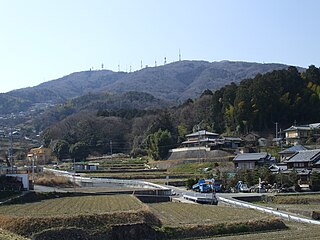
Mount Ikoma is a mountain on the border of Nara Prefecture and Osaka Prefecture in Japan. It is the highest peak in the Ikoma Mountains with a height of 642 meters.
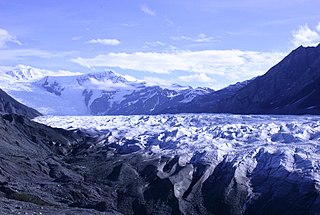
Kluane / Wrangell–St. Elias / Glacier Bay / Tatshenshini-Alsek is an international park system located in Canada and the United States, at the border of Yukon, Alaska and British Columbia.
Under UNESCO's Man and Biosphere Reserve Programme, there are 142 biosphere reserves recognized as part of the World Network of Biosphere Reserves in Asia and the Pacific as of April 2016. These are distributed across 24 countries in the region.
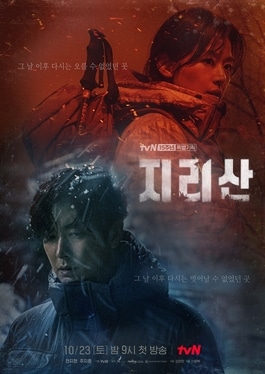
Jirisan (Korean: 지리산) is a 2021 South Korean television series starring Jun Ji-hyun and Ju Ji-hoon. It is named after the eponymous mountain in South Korea and has been promoted as "tvN's 15th Anniversary Special Drama". It premiered on tvN on October 23 to December 12, 2021, and aired every Saturday and Sunday at 21:00 (KST). The series is available for streaming on iQIYI worldwide, and on Viki and Netflix in selected territories.